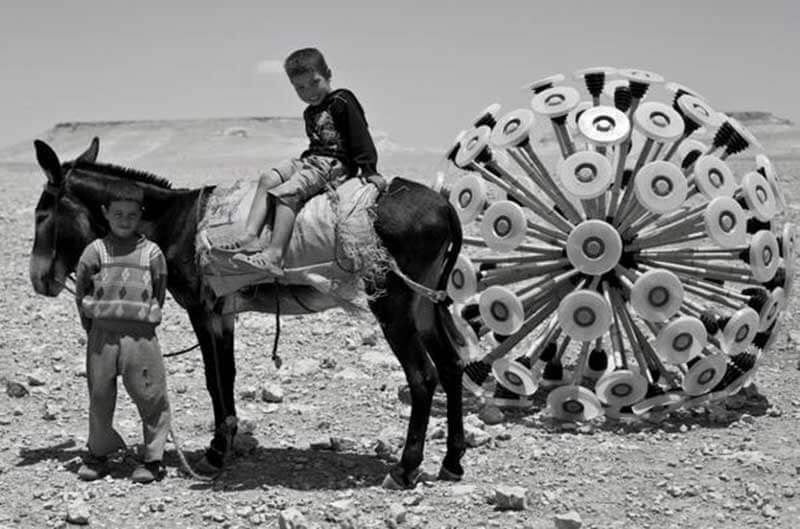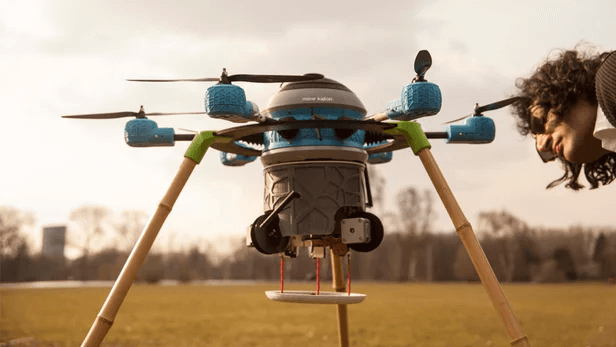- A problem that touches every continent
- Afghan refugees with a dream to rid the world of mines
- This beautiful, wind-powered dandelion can clear a path through a minefield
- Getting the new mine-clearing drone off the ground: problems and progress
For the people living with the consequences of war, the past is always present. And even once peace has been declared, the killing can continue in the form of explosive remnants of war (ERW) like faulty ordinance or landmines. And while many ERW are unintended consequences of war, landmines are savage, indiscriminate weapons that kill far more civilians than soldiers. According to the most recent report of the Landmine Monitor, “Civilians represented the vast majority of casualties,” numbering a steady average that hovers just below 80 per cent. In 2016, for instance, “8,605 people were killed or injured by landmines”, a horrifying statistic that grows with each new conflict.
A problem that touches every continent
This is a global problem, touching every continent. From Zimbabwe to Afghanistan, Argentina to Yemen, these terrible weapons are still claiming limbs and lives. Here in Europe, one need look no farther than Croatia and Bosnia & Herzegovina, whose people still live with the reality of minefields. The world isn’t sitting idle, and detection and removal is happening as you read this. But the reality of demining is grim. As Evolving Science reports, “Currently, mine-sweeping is usually carried out manually by experts who diffuse the mines individually once they have been located. This is a highly skilled and dangerous job, with the UN estimating that for every 5,000 mines cleared, one expert will be killed and two injured.”
The best methods now being used involve technicians carrying mine detectors; large, armoured vehicles that plow the earth and set off the mines; or highly trained dogs and rats who can smell the high explosive and alert a technician who then destroys the mine. In most cases, and in forested or rocky terrain, human beings are involved in the process, putting them in harm’s way.
Afghan refugees with a dream to rid the world of mines
Mahmud and Massoud Hassani, brothers from Kabul, Afghanistan, are no strangers to suffering. They fled the conflict in their homeland, moving repeatedly for four years until they settled in the Netherlands. But they never forgot what they saw, nor did they turn a blind eye to the suffering of others facing the horrors of war. As Mahmud says, “every 22 minutes, someone gets injured or even dies from a land mine. The problem is too often neglected, and there is barely technological innovation when it comes to removing landmines. People are still using old-fashioned and often dangerous ways to detect landmines.”

The brothers wanted to do something, and their imagination was fired by the simple toys they built as children. Pushed by the wind, these rolling balls were literally child’s play. These toys used a number of legs connected to a central ball to create a sphere. Since each leg ended in a large ‘foot’, the wind would blow them and send them spinning across the ground. Mahmud and Massoud realised that by scaling-up these designs, they might create a simple mine-clearing device.
This beautiful, wind-powered dandelion can clear a path through a minefield
Massoud was then a student at the Design Academy Eindhoven, in the Netherlands, and he had the training and skill to bring the brothers’ dream to fruition. Using a heavy core that weighs about 17kg, he designed a sphere of bamboo legs. Each leg has a round, rubber foot, allowing it to move over rough ground. The total weight of the sphere, called a “Mine Kafon” is enough to trip a mine, and the bamboo is approximately the length of a human leg. Since the mines are designed to maim, blowing victims’ legs off below the hip, mines triggered by the Mine Kafon destroy the bamboo but leave the core intact. After about four such explosions, the sphere is too damaged to roll on its own any more, and needs to be retrieved and refitted.
https://www.youtube.com/watch?v=fz8vfd5FT-4
Two things are ingenious about this design. First, it’s inexpensive and easy to build. That puts it within reach of the people who need it most. “The first design was created for people who have nothing,” the brothers said. Second, it’s unmanned, keeping people away from the exploding mines. These advantages won it a place on the shortlist for the London Design Museum’s 2012 Design of the Year Award. It also won the attention of the Dutch military, who promptly put it to the test. Unfortunately, these field trials revealed some significant weaknesses, too.
As Adam Komorowski, an expert on mine detection and clearance and commercial director at Explosive Risk Solutions, explained to Evolving Science, because the design is dependent on the wind, it can’t search an area systematically. That’s a major problem for mine detection, though it could still be used in a mine-infested area. But because the Mine Kafon needs to be retrieved after a few explosions, it would put people at risk. It’s a cool idea and an innovative approach, but it just isn’t going to work as well as is needed for this critical task.
Their new mine-clearing drone gets off the ground: problems and progress
But Mahmud and Massoud Hassani weren’t deterred, and they started dreaming bigger. If the primary problem with current approaches to demining was that they put people in danger, maybe they could find a way to fully automate detection, mapping, and destruction. Their brainchild is the Mine Kafon drone.
The brothers had a clear vision: a drone big and strong enough to carry detection, GPS mapping, and destruction equipment. From small, one-person metal-detecting wands to larger, nearly 1 m2 devices, the Hassani’s drone needed to be able to handle it all. When it locates a mine, it needs to mark it on a GPS map, and then later, when fitted with a robotic claw, it can carefully drop a tiny explosive charge that’ll destroy the weapon.

The advantages of such a system are obvious, and the brothers’ Kickstarter campaign was well-funded. Soon, they had worldwide attention, and the list of awards their drone concept has since won would impress even Elon Musk. And in February of last year, the Mine Kafon drone competed in Drones for Good, a competition sponsored by and held in the United Arab Emirates, where it faced-off against 1,000 other designs. They placed an impressive 4th, losing to a team from Nokia, and learned a lot in the process. Everything from their control interface to the mechanical claw had problems, forcing them to rethink their system from the ground up.
But by that summer, the brothers had opened a new lab, hired more staff, and launched an exciting new collaboration with the Technical University of Nancy in France. With the help of a team of professors and Ph.D. students, they hope to increase progress and speed delivery of a mass-production system. According to their latest update, the team is now dividing detection, mapping, and destruction tasks between two different drones. A small, very high precision unit will locate and map the mines, while a very large drone that can lift up to 30 kg carries out the destruction. They’re working to refine the software, battery system, and robotic arm, too, and look forward to the day when their dream can begin: clearing mines in the real world.
Share via:


